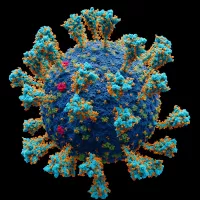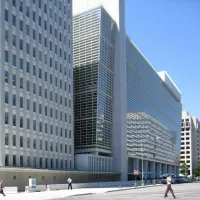Tajikistan, officially the Republic of Tajikistan, is a landlocked country in Central Asia. Its capital and largest city is Dushanbe. Tajikistan shares borders with Afghanistan, Uzbekistan, Kyrgyzstan, and China, and is separated from Pakistan by Afghanistan's Wakhan Corridor. The country has a population exceeding 10.7 million.
1910: Uprisings against the Khanate of Kokand
Between 1910 and 1913, Russian troops were required to restore order during uprisings against the Khanate of Kokand.
1913: Uprisings against the Khanate of Kokand
Between 1910 and 1913, Russian troops were required to restore order during uprisings against the Khanate of Kokand.
July 1916: Violence in Khujand
In July 1916, demonstrators attacked Russian soldiers in Khujand over the threat of forced conscription during World War I. Russian troops brought Khujand back under control, but clashes continued throughout the year in various locations in Tajikistan.
1917: Basmachi revolt after the Russian Revolution
After the Russian Revolution of 1917, guerrillas throughout Central Asia, known as basmachi, waged a war against Bolshevik armies in an attempt to maintain independence.
1924: Creation of the Tajik Autonomous Soviet Socialist Republic
In 1924, the Tajik Autonomous Soviet Socialist Republic was created as a part of Uzbekistan.
1926: Increase in Russian population
Between 1926 and 1959 the proportion of Russians among Tajikistan's population grew from less than 1% to 13%.
1927: Collectivization of agriculture begins
Between 1927 and 1934, collectivization of agriculture and an expansion of cotton production took place in Tajikistan, especially in the southern region.
1927: Stalin's purges begin
Two rounds of Stalin's purges (1927–1934 and 1937–1938) resulted in the expulsion of nearly 10,000 people from all levels of the Communist Party of Tajikistan.
1928: Soviet authorities start an anti-religious campaign of secularization
Between 1928 and 1941, Soviet authorities started an anti-religious campaign of secularization in Tajikistan. Practising Christianity, Islam, or Judaism was discouraged and repressed; several churches, mosques, and synagogues were closed.
December 1929: Tajikistan becomes a constituent republic of the Soviet Union
On December 5, 1929, the country's borders were drawn when it was part of Uzbekistan as an autonomous republic before becoming a constituent republic of the Soviet Union.
1929: Tajikistan Soviet Socialist Republic formed
In 1929 the Tajikistan Soviet Socialist Republic (Tajikistan SSR, Таджикская ССР) was made a separate constituent republic; the predominantly ethnic Tajik cities of Samarkand and Bukhara remained in the Uzbek SSR.
1934: Collectivization of agriculture continues
Between 1927 and 1934, collectivization of agriculture and an expansion of cotton production took place in Tajikistan, especially in the southern region.
1934: Stalin's purges
Two rounds of Stalin's purges (1927–1934 and 1937–1938) resulted in the expulsion of nearly 10,000 people from all levels of the Communist Party of Tajikistan.
1937: Stalin's purges continue
Two rounds of Stalin's purges (1927–1934 and 1937–1938) resulted in the expulsion of nearly 10,000 people from all levels of the Communist Party of Tajikistan.
1938: Stalin's purges
Two rounds of Stalin's purges (1927–1934 and 1937–1938) resulted in the expulsion of nearly 10,000 people from all levels of the Communist Party of Tajikistan.
1939: Tajiks conscripted into the Red Army
In 1939, Tajiks began to be conscripted into the Red Army.
1941: Soviet authorities start an anti-religious campaign of secularization
Between 1928 and 1941, Soviet authorities started an anti-religious campaign of secularization in Tajikistan. Practising Christianity, Islam, or Judaism was discouraged and repressed; several churches, mosques, and synagogues were closed.
1946: Bobojon Ghafurov becomes First Secretary
In 1946, Bobojon Ghafurov became First Secretary of the Communist Party of Tajikistan.
1956: Bobojon Ghafurov remains First Secretary
From 1946 to 1956, Bobojon Ghafurov was the First Secretary of the Communist Party of Tajikistan.
1957: Virgin Lands Campaign
During 1957–58 Nikita Khrushchev's Virgin Lands Campaign focused attention on Tajikistan, where living conditions, education and industry lagged behind the other Soviet Republics.
1959: Increase in Russian population
Between 1926 and 1959 the proportion of Russians among Tajikistan's population grew from less than 1% to 13%.
1979: Peak of Ethnic German Population
In 1979, the ethnic German population in Tajikistan peaked at 38,853 before declining.
1988: Dushanbe Tea House gift
In 1988, Tajikistani artisans created the Dushanbe Tea House, which was presented as a gift to the sister city of Boulder, Colorado.
1989: Ethnic Russian population decline
In 1989, ethnic Russians constituted 7.6% of Tajikistan's population.
February 1990: Riots and Strikes in Dushanbe
In February 1990, riots and strikes began in Dushanbe and other cities due to socio-economic issues, housing shortages, and unemployment. Nationalists, democrats, and Islamists demanded independence and reforms, leading to the Soviet leadership deploying Internal Troops to quell the unrest.
1990: Nationalists called for increased rights
By the 1980s Tajik nationalists were calling for increased rights and in 1990 real disturbances occurred within the republic.
September 1991: Tajikistan Declares Independence
On September 9, 1991, Tajikistan declared its independence.
1991: Alternate spellings of Tajikistan
Prior to 1991, Tajikistan appeared as Tadjikistan or Tadzhikistan in English. This is due to a transliteration from the Russian: "Таджикистан".
May 1992: Start of the Tajik Civil War
In May 1992, a civil war began in Tajikistan following its independence.
September 1992: Nabiyev forced to resign
On September 7, 1992, Nabiyev was forced at gunpoint to resign from office. Emomali Rahmon came to power in the early part of this conflict in 1992.
1992: Andrey Abduvaliyev Olympic gold
In 1992, Andrey Abduvaliyev won gold in the men's hammer throw at the Olympics as part of the Unified Team.
1992: Decrease in hospital beds
Since 1992 following the dissolution of the USSR, Tajikistan has experienced a decrease in per capita hospital beds.
1994: Emomali Rahmon comes to power
In 1994, Emomali Rahmon became the leader of Tajikistan, heading an authoritarian regime.
1994: Decrease in patent applications
The annual number of patent applications for inventions in Tajikistan decreased from 193 in 1994 to 5 in 2011.
1996: Richard Frye explains the evolution of Tajiks
In a 1996 publication, Richard Frye explains that factors must be taken into account in explaining the evolution of the peoples whose remnants are the Tajiks in Central Asia.
June 1997: End of the Tajik Civil War
The civil war in Tajikistan, which began in May 1992, ended in June 1997.
1997: Ceasefire reached in Tajikistan
In 1997, a ceasefire was reached between Rahmon and opposition parties under the guidance of Gerd D. Merrem, Special Representative to the Secretary General, a result praised as a successful United Nations peacekeeping initiative. The ceasefire guaranteed 30% of ministerial positions would go to the opposition.
1997: Library of Congress study on the origins of the word "Tajik"
In 1997, the Library of Congress's Country Study of Tajikistan found it difficult to definitively state the origins of the word "Tajik."
1997: End of the civil war
In 1997, the civil war in Tajikistan ended after a peace agreement was made between the government and the Islamist-led opposition.
1997: The war lasted until 1997
The war in Tajikistan lasted until 1997. During this time more than 500,000 residents fled because of persecution and increased poverty.
1998: Further reduction of ethnic Russians after civil war
By 1998, the proportion of ethnic Russians in Tajikistan had reduced to approximately 0.5% following the Tajikistani Civil War, which displaced many.
1999: Births attended by skilled health staff
According to the World Bank, 66.6% of births were attended by skilled health staff in 1999 in Tajikistan.
1999: Peaceful elections
In 1999, a central government began to take form in Tajikistan, with peaceful elections taking place.
1999: Rahmon re-elected in criticized elections
In 1999, elections were held and were criticised by opposition parties and foreign observers as unfair; Rahmon was re-elected with 98% of the vote.
2000: Registered disabled people
In 2000, the state's Ministry of Labor and Social Welfare reported that 104,272 disabled people were registered in Tajikistan.
2000: International assistance for rehabilitation programs
In fiscal year 2000, international assistance remained an essential source of support for rehabilitation programs that reintegrated former civil war combatants into the civilian economy.
2000: Economic growth
The GDP of Tajikistan expanded at an average rate of 9.6% over the period of 2000–2007 according to the World Bank data.
August 2001: Famine striking Tajikistan
On 21 August 2001, the Red Cross announced that a famine was striking Tajikistan, and called for international aid for the country.
September 11, 2001: French troops stationed at Dushanbe Airport
Since the September 11, 2001 attacks, French troops have been stationed at Dushanbe Airport in support of air operations of NATO's International Security Assistance Force in Afghanistan.
2004: Construction of the Tajik–Afghan Friendship Bridge
In 2004 the Tajik–Afghan Friendship Bridge between Afghanistan and Tajikistan was built by the United States, improving the country's access to South Asia.
2004: Public expenditure on health
In 2004, public expenditure on health in Tajikistan was at 1% of the GDP.
2005: Accusations against the parliamentary elections
In 2005, opposition parties and international observers accused President Emomali Rahmon of corruptly manipulating the election process and unemployment.
2005: Public spending on education
Public spending on education in Tajikistan was relatively constant between 2005–2012.
2005: Russian border troops stationed along the Tajik–Afghan border
Russian border troops were stationed along the Tajik–Afghan border until summer 2005.
November 2006: Political passivity in Tajikistan
In November 2006, Ilan Greenberg wrote about Tajikistan's profound aversion to risk and skepticism of promises of reform in The New York Times, before the country's presidential election.
November 2006: Presidential election boycott
In November 2006, the presidential election was boycotted by "mainline" opposition parties, including the 23,000-member Islamic Renaissance Party.
2006: Administrative divisions
As of 2006, there were 58 districts and 367 jamoats in Tajikistan.
2006: Rahmon wins another election amidst criticism
Elections in 2006 were again won by Rahmon (with 79% of the vote) and he began his third term in office. Opposition parties boycotted the 2006 election and the Organization for Security and Cooperation in Europe (OSCE) criticised it, while observers from the Commonwealth of Independent States claimed the elections were legal and transparent.
2006: AFC Challenge Cup win
In 2006, the men's football team won the inaugural edition of the AFC Challenge Cup.
2006: Drug confiscations
Tajikistan held third place in the world for heroin and raw opium confiscations in the first half of 2006.
2006: World Bank Tajikistan Policy Note
The World Bank Tajikistan Policy Note 2006 concludes that remittances have played a role as 1 of the drivers of Tajikistan's economic growth during the past years, have increased incomes, and as a result helped reduce poverty.
2007: Economic growth
The GDP of Tajikistan expanded at an average rate of 9.6% over the period of 2000–2007 according to the World Bank data.
January 2008: Sangtuda-1 hydroelectric power station commenced operations
On 18 January 2008, Russia's RAO UES's Sangtuda-1 hydroelectric power station (670 MW capacity) commenced operations.
2008: Tertiary education enrollment
As of 2008, tertiary education enrollment in Tajikistan was 17%.
2008: Rugby union registered
In 2008, rugby union was officially registered with the Ministry of Justice in Tajikistan.
2009: Airports in Tajikistan
In 2009 Tajikistan had 26 airports, 18 of which had paved runways, of which two had runways longer than 3,000 meters.
2009: Agreement to improve highway and rail system
In 2009, an agreement was made between Tajikistan, Pakistan, and Afghanistan to improve and build a 1,300 km (810 mi) highway and rail system connecting the three countries to Pakistan's ports.
2009: Tajik migrant workers and rural female population
In 2009, nearly 1 million Tajiks worked abroad, mainly in Russia, and over 70% of the female population lived in traditional villages.
2009: Increase in remittances
Remittances from Tajik labour migrants totalled an estimated $2.1 billion US dollars in 2010, an increase from 2009.
2009: Sunni Islam recognized
Since 2009, Sunni Islam of the Hanafi school has been officially recognised by the government of Tajikistan.
February 2010: Parliamentary elections
In February 2010, the ruling PDPT lost four seats in Parliament, yet still maintained a majority. The OSCE stated that "these elections failed on many basic democratic standards."
September 2010: Ayni Air Base rebuilt
In September 2010, The Government of India rebuilt the Ayni Air Base, a military airport located 15 km southwest of Dushanbe, completing the repairs at a cost of $70 million.
October 2010: OSCE criticizes Rahmon's administration
In October 2010, Rahmon's administration came under further criticism from OSCE for its censorship and repression of the media.
November 2010: End of the military operation in the Rasht Valley
The military operation in the Rasht Valley was concluded in November 2010.
2010: Polio outbreak
In 2010, Tajikistan experienced an outbreak of polio that caused more than 457 cases and 29 deaths before being brought under control.
2010: Remittances from Tajik labour migrants
In 2010, remittances from Tajik labour migrants totalled an estimated $2.1 billion US dollars.
2011: Jewish population in Tajikistan
As of 2011, the Jewish population in Tajikistan was estimated at less than 500, with roughly half living in Dushanbe.
2011: Researchers at universities
In 2011, 6707 researchers worked at universities in Tajikistan, of which 2450 had academic degrees.
January 2012: Food insecurity
In January 2012, 680,152 of the people living in Tajikistan were living with food insecurity.
July 2012: Fighting Erupts in Gorno-Badakhshan
In July 2012, fighting erupted again in and around Gorno-Badakhshan.
2012: Cricket Federation formed
In 2012, the Tajikistan Cricket Federation was formed as the governing body for the sport of cricket in Tajikistan.
2012: Agreement to construct roads, railways, and pipelines
In 2012, the presidents of Tajikistan, Afghanistan, and Iran signed an agreement to construct roads and railways, and oil, gas, and water pipelines to connect the three countries.
2012: Public spending on education
Public spending on education in Tajikistan was relatively constant between 2005–2012.
2014: Highway and tunnel construction projects underway
As of 2014 highway and tunnel construction projects are underway or have been completed, supported by international donor countries.
2014: Remittance-dependent economy
In 2014 Tajikistan was the world's most remittance-dependent economy with remittances accounting for 49% of GDP.
2014: Physicians per capita
In 2014, there were 2.1 physicians per 1,000 people in Tajikistan.
May 2015: Colonel Gulmurod Khalimov defects to Islamic State
In May 2015, Colonel Gulmurod Khalimov, commander of the special-purpose police unit (OMON) of the Interior Ministry, defected to the Islamic State, marking a setback for Tajikistan's national security.
2015: Remittances expected to fall
In 2015, Tajikistan's remittances were expected to fall by 40% due to the economic crisis in the Russian Federation.
January 2016: Anti-radicalisation campaign
In January 2016, police in the Khatlon region of Tajikistan reportedly shaved the beards of 13,000 men and shut down 160 shops selling the hijab as part of an "anti-radicalisation campaign".
2016: Dilshod Nazarov Olympic gold
In 2016, Dilshod Nazarov won gold in the men's hammer throw at the Olympics.
2016: Planned education system change
In 2016, the government of Tajikistan planned to implement a 12-year public education system.
September 2017: Alleged death of Gulmurod Khalimov
In September 2017, Gulmurod Khalimov was allegedly killed during a Russian airstrike near Deir ez-Zor, Syria, although Tajikistan authorities expressed doubts about his death.
September 2017: University of Central Asia campus launch
In September 2017, the University of Central Asia launched its second campus in Khorog, Tajikistan, offering majors in Earth & Environmental Sciences and Economics.
2018: Infant mortality rate
In 2018, the infant mortality rate in Tajikistan was approximately 30.42 deaths per 1,000 children.
2018: CAFA Women's Championship participation
In 2018, the women's football side participated in the CAFA Women's Championship, finishing third.
July 2019: Joint letter defending China's treatment of Uyghurs
In July 2019, UN ambassadors of 37 countries, including Tajikistan, signed a joint letter to UNHRC defending China's treatment of Uyghurs in the Xinjiang region.
2019: GDP from immigrant remittances
In 2019, nearly 29% of Tajikistan's GDP came from immigrant remittances (mostly from Tajiks working in Russia).
October 2020: Presidential re-election
In October 2020, President Emomali Rahmon was re-elected for another seven-year term with 90% of the vote, following a largely ceremonial election.
2020: Democracy Index rank
In 2020, Tajikistan was ranked 160th in the Democracy Index by the Economist Intelligence Unit, receiving the designation of "authoritarian regime".
2020: Life expectancy
In 2020, the estimated life expectancy at birth in Tajikistan was 69 years.
April 2021: Conflict over water escalates into border clashes
In April 2021, a conflict over water with Kyrgyzstan escalated into one of the border clashes between the two countries since independence.
July 2021: Appeal to CSTO for help
In July 2021, Tajikistan appealed to members of a Russian-led Collective Security Treaty Organization (CSTO) for help in dealing with security challenges emerging from neighboring Afghanistan.
2021: Tajik citizens in Russia
In 2021, approximately 2.4 million Tajik citizens were officially registered in Russia.
2021: Tajikistan allegedly involved in Panjshir conflict
In 2021, following the Fall of Kabul, Tajikistan allegedly got involved in the Panjshir conflict against the Taliban on the side of the National Resistance Front of Afghanistan.
2021: Coronavirus ravages Tajikistan
In the summer of 2021, coronavirus ravaged Tajikistan, and the Tajik president's sister reportedly died in a hospital of COVID-19.
September 2022: Armed clashes erupt between Kyrgyzstan and Tajikistan
In September 2022, armed clashes, including the use of artillery, erupted along most of the border between Kyrgyzstan and Tajikistan.
2022: CAFA Women's Championship hosted
In 2022, the women's football side hosted the CAFA Women's Championship.
2023: Population estimate
In 2023, Tajikistan was estimated to have a population of 10,389,799 as per the World Bank data.
2023: Malaria-free certification
In 2023, according to the World Health Organization, Tajikistan received its certification, declaring its status as a malaria-free country.
2023: Malnutrition rate forecast
In 2023, the malnutrition rate in Tajikistan will reach 30% according to the United Nations World Food Programme (WFP).
2023: AFC Asian Cup qualification
In 2023, the men's football side qualified for the AFC Asian Cup, reaching the quarter finals.
2024: Global Innovation Index ranking
Tajikistan was ranked 107th in the Global Innovation Index in 2024.
2024: Medal haul at Olympics
Tajikistan's highest medal haul at an Olympic Games came in the 2024 Summer Olympics, where its athletes won three medals.
Mentioned in this timeline
The Union of Soviet Socialist Republics USSR existed from to...

Coronaviruses are a family of RNA viruses affecting mammals and...
India officially the Republic of India is a South Asian...
China officially the People's Republic of China PRC is an...
Syria officially the Syrian Arab Republic is a West Asian...

The World Bank is an international financial institution offering loans...
Trending

Robert Kraft is an American billionaire businessman best known as the chairman and CEO of the Kraft Group His portfolio...
1 month ago Drake London Suffers PCL Sprain, Out for at Least One Week.
1 month ago Avelo Adds Routes, Offers Cheap Flights: $34 to Florida, $35 from Concord.
22 days ago SeaWorld and Busch Gardens Face DOJ Probe Over Walker Ban Policy.

21 days ago Marvin Harrison Jr. Appendectomy: Expected to play in Week 13 vs Buccaneers
2 months ago Belgium Defeats Wales 4-2, Jeopardizing World Cup Hopes; De Bruyne Scores Twice.
Popular

Candace Owens is an American conservative political commentator and author...

Tucker Carlson is an American conservative political commentator known for...

XXXTentacion born Jahseh Dwayne Ricardo Onfroy was a controversial yet...

Ben Shapiro is a prominent American conservative political commentator media...

William Franklin Graham III commonly known as Franklin Graham is...

Bill Gates an American businessman and philanthropist revolutionized personal computing...